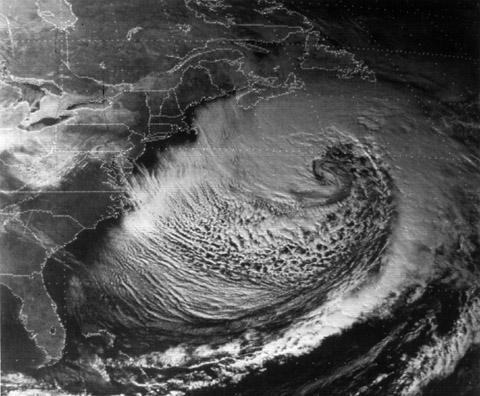One of the most challenging (and satisfying) articles I’ve written
I recently coauthored a paper that has now been accepted for publication in the Bulletin of the American Meteorological Society.
Schultz, D. M., and G. Vaughan, 2011: Occluded fronts and the occlusion process: A fresh look at conventional wisdom. Bull. Amer. Meteor. Soc., 92, doi: 10.1175/2010BAMS3057.1.
This paper is the first one I’ve written solely on occluded fronts since I started my meteorological career on occluded fronts with my master’s thesis (published as Schultz and Mass 1993, Mon. Wea. Rev.). It’s a topic that I’ve read thoroughly and am passionate about it. Schultz and Vaughan (2011) summarizes some things I had been thinking about for several years, but had not articulated into a written framework. Geraint Vaughan’s contributions to helping me articulate myself were considerable, as well.
Writing the paper provided a set of challenges that were easier to handle because of the lessons that I learned in writing Eloquent Science. The challenges included:
- Conveying information at a level where you didn’t need to be an expert to understand.
- Fighting the desire to discuss the fine details that interest me, but may not interest most of the readers.
- Creating illustrations that are both scientifically accurate and easy to understand.
- Addressing published research that is counter to the arguments that I make.
- Convincing others to abandon what they’ve been taught in favor of this new paradigm that better explains the observations.
- Providing an explanation that authors can adopt in revised versions of their textbooks, especially for introductory-level meteorology courses.
One example of how proud I am of the article is that I was able to draw a nice analogy, as shown below.
It is undeniably true that in many cyclones the cold front approaches the warm front, eventually overtaking it. But, is catch-up the explanation for occluded-front formation, or is it the consequence of an underlying dynamical process?
Consider the following analogy. Suppose you had come across an automobile accident and asked a witness, “What happened here?” and got the obvious and unhelpful response, “Two cars collided.” An explanation would be if one car failed to brake or one car ran a red light. Information from the collision could then be used to assess which possible explanations are most likely (e.g., the damage patterns on the two cars can rule out some possible explanations). Simply put, catch-up to produce an occluded front is the result of the occlusion process in the Norwegian cyclone model; it does not provide an explanation for how the occlusion process occurs.
Another aspect of the paper that I am proud of is that nearly all the figures were drafted or redrafted by a professional graphic artist, Nick Sellers of CutGraphics. The figures showing the different airstreams of an extratropical cyclone were painstakingingly crafted to ensure that they are as scientifically accurate as is feasible.
More scientific papers ought to consider using graphics developed by professionals. Let’s face it, unless you have the artistry of Mel Shapiro, many of us scientists don’t have the artistic ability to draw professional-looking graphics. I only paid a few hundred pounds to get these figures done, which is a fraction of the page charges that I will pay to publish the article. Thus, I think this money was well worth it.





Dave,
Congrats on the article, I look forward to reading it (my BAMS just arrived in the mail yesterday)! I wholeheartedly concur on graphics. Interested readers may wish to consider the following resources:
http://www.edwardtufte.com/tufte/
http://www.edwardtufte.com/tufte/books_visex
(atmospheric scientists will quickly grasp the book’s cover figure)
http://www.squidoo.com/become-a-really-good-graphic-designer
http://www.bamagazine.com/
http://www.bamagazine.com/Articles.asp?ID=172
(view the “The visual oxymoron” video clip)
The point is not to turn scientists into graphic designers (save for the few who have the talent and inclination to pursue it), but rather to open the eyes to the gap between most figures and those that truly advance understanding.